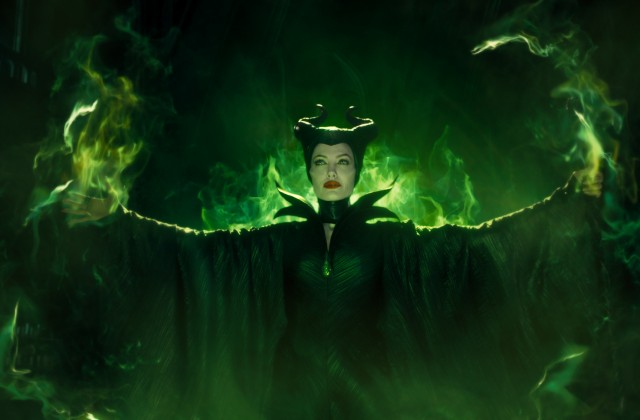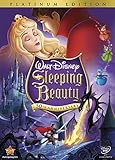Angelina Jolie works her magic in Maleficent

Disney attempts to humanize one of its best villains in ‘Maleficent,’ but will ‘Sleeping Beauty’ purists appreciate the effort or put their own curse on the film?
Walt Disney created a classic animated fairy tale in 1959 with the release of Sleeping Beauty, the first animated film to be shot in 70mm widescreen with 6-channel stereo sound. The classic tale of a cursed princess also gave the world one of the most famous cartoon villains (and for many, including John Waters, the favorite cartoon villain of all), the evil Maleficent.
In the animated film, Maleficent, offended at not being invited to the christening of King Stefan’s baby Aurora, places a curse on the child: she will grow and be loved by all, but will prick her finger on the spindle of a spinning wheel before the sun sets on her sixteenth birthday and die (one of the fairies in attendance is able to weaken the curse so that she just falls into a deep sleep and can only be awakened by true love’s kiss).
In Maleficent, the new live action re-telling of the story, we learn that what we know from Sleeping Beauty isn’t exactly the full story. Angelina Jolie stars as Maleficent, whom we learn is a powerful fairy protective of her domain and all the creatures that dwell within the land. In the human world, a king means to ransack her world and claim it all as his own but his army is no match for Maleficent and her magic. But she also has a connection to the human world in the form of Stefan, whom she met as a boy and who comes to warn her about the king’s plan to kill her. But Stefan also has his eyes on the throne and drugs Maleficent so that he may amputate her wings to bring to the king as a trophy.
When Stefan becomes king and has a child, Maleficent arrives unannounced at the christening and places the curse on the baby … although in this version she just places her in a death-like sleep, only to be awoken by true love’s kiss, and nothing on earth shall remove the curse. Maleficent doesn’t believe in true love because she once believed Stefan loved her (he basically came up with “true love’s kiss” when they were younger), so she is sure Princess Aurora will never awaken.
The film then takes us on quite a different journey as we see Maleficent watch Aurora grow, and the two even develop a relationship, with Aurora calling Maleficent her Fairy Godmother (she never knows her true name until her fate is revealed). But once Maleficent discovers a love for the child that she never expected, she tries to remove the curse but to no avail. Will the young prince Aurora met days before her birthday be her true love and break the curse?
Mainstream reviews for Maleficent are mixed to poor, and I find that truly baffling. I wasn’t expecting a lot from the movie, but I came out pleasantly surprised. Perhaps people object to the retelling of a classic story through the eyes of the villain, or perhaps they find Jolie’s prosthetic cheekbones too distracting (for me, it was her poorly applied lipstick), or perhaps they just didn’t want their favorite villain humanized. In fact, it was the humanization of Maleficent, and Jolie’s heartfelt performance, that made the movie enjoyable.
I totally bought the relationship that developed between Maleficent and Aurora, even as Maleficent tried to shoo the child away many times when she was an infant (the scenes with Jolie and her real life daughter as young Aurora are quite humorous as she tells the girl she hates children). Jolie and Elle Fanning, who plays the teen Aurora, have a great mother/daughter chemistry and you know your heart is going to break along with Maleficent’s when the inevitable curse manifests itself. I liked Jolie’s rapport with Sam Riley, who plays the human version of her crow Diaval who becomes sort of like Maleficent’s Jiminy Cricket. There is some real, human emotion going on and that totally drew me in to the story.
On the downward side of things, I wasn’t all that enthralled with the various, generic woodland creatures that seemed to have been repurposed from another movie, and the fairies (played by Imelda Staunton, Lesley Manville and Juno Temple) just looked weird in their fairy form. The production design of Maleficent’s land, however, was lovely (although that also could have come from Disney’s Oz, the Great and Powerful) and the dragon ranks up there with Smaug as a classically fearsome creature (although its origin is also different than the one in the original Sleeping Beauty, which may also offend the purists). The film, though, belongs to Jolie no matter how you look at it, and she gives a wonderfully delicate performance, never once tipping Maleficent’s evilness over into campy scenery chewing.
Some people may take offense at Disney’s attempt to humanize one of its most famous villains (which could make viewing Sleeping Beauty a completely different experience), but Jolie’s fine performance, a tight script by The Lion King writer Linda Woolverton, and a lean running time of 97 minutes, makes this story worth telling.
 CliqueClack
CliqueClack

